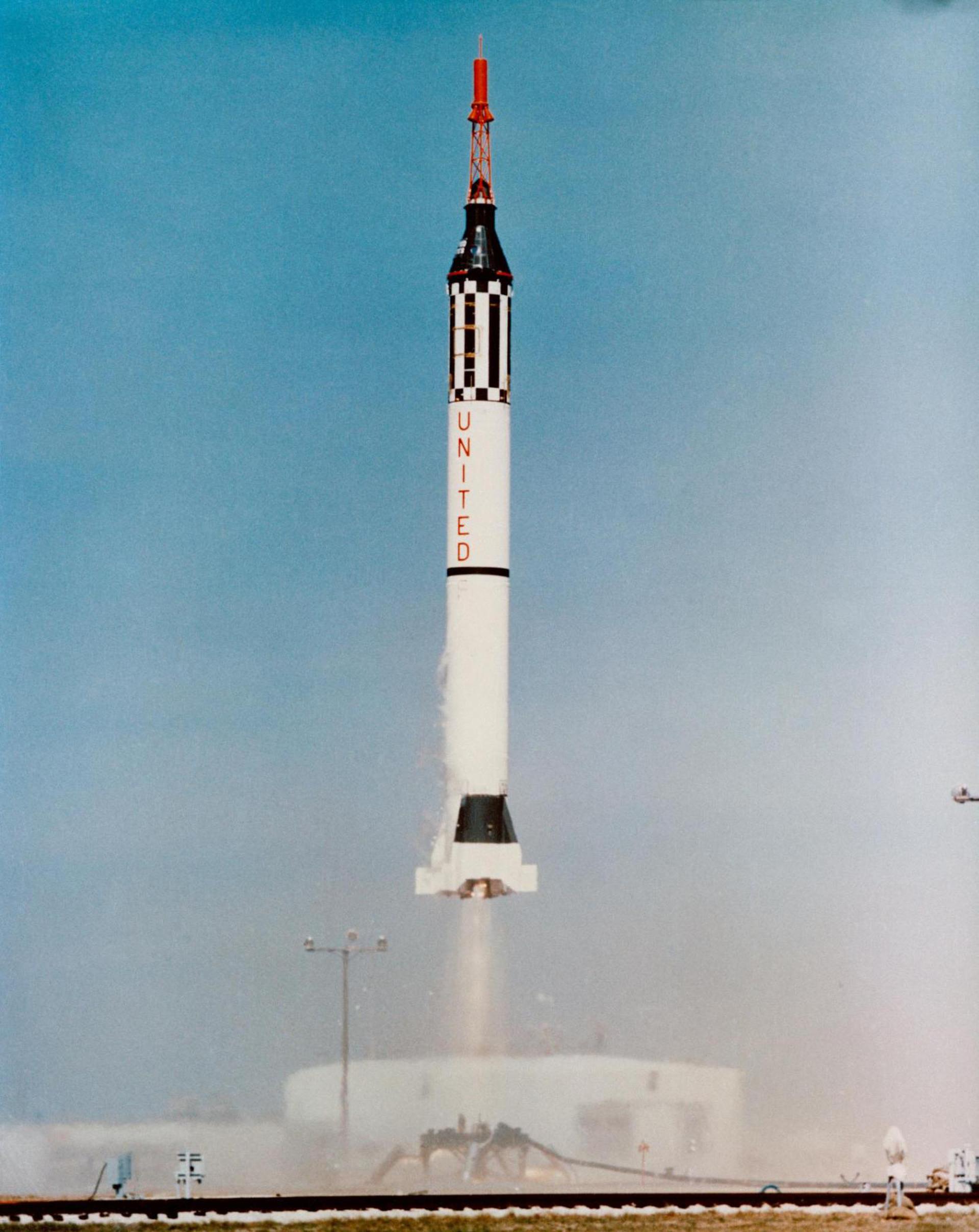
Redstone
In-activeChrysler (CHR)
Nov. 21, 1960
Description
The Mercury-Redstone Launch Vehicle, designed for NASA's Project Mercury, was the first American manned space booster. It was used for six sub-orbital Mercury flights from 1960–61; culminating with the launch of the first, and 11 weeks later, the second American (and the second and third humans) in space. The four subsequent Mercury human spaceflights used the more powerful Atlas booster to enter low Earth orbit. A member of the Redstone rocket family, it was derived from the U.S. Army's Redstone ballistic missile and the first stage of the related Jupiter-C launch vehicle; but to human-rate it, the structure and systems were modified to improve safety and reliability.
Specifications
-
Stages
1 -
Length
25.41 m -
Diameter
1.78 m -
Fairing Diameter
1.78 m -
Launch Mass
30.0 T -
Thrust
― -
Apogee (Sub-Orbital)
260.0 km
Family
-
Name
Redstone -
Family
― -
Variant
MRLV -
Alias
― -
Full Name
Redstone MRLV
Payload Capacity
-
Launch Cost
― -
Low Earth Orbit
― -
Geostationary Transfer
Orbit
― -
Direct Geostationary
― -
Sun-Synchronous Capacity
―
Chrysler
Commercial
None
CHR 1950In July 1959, NASA chose the Redstone missile as the basis for the Mercury-Redstone Launch Vehicle to be used for suborbital test flights of the Project Mercury spacecraft. Three unmanned MRLV launch attempts were made between November 1960 and March 1961, two of which were successful. The MRLV successfully launched the chimpanzee Ham, and astronauts Alan Shepard and Gus Grissom on three suborbital flights in January, May and July 1961, respectively.
Redstone MRLV | Mercury-Redstone 4
Chrysler | United States of AmericaCape Canaveral SFS, FL, USA
July 21, 1961, 12:20 p.m.
Status: Launch Successful
Mission:
Mercury-Redstone 4 was the second United States human spaceflight, on July 21, 1961. The suborbital Project Mercury flight was launched with a Mercury-Redstone Launch Vehicle, MRLV-8. The spacecraft, Mercury capsule #11, was nicknamed the Liberty Bell 7, and it was piloted by the astronaut Virgil "Gus" Grissom.
SuborbitalRedstone MRLV | Mercury-Redstone 3
Chrysler | United States of AmericaCape Canaveral SFS, FL, USA
May 5, 1961, 2:34 p.m.
Status: Launch Successful
Mission:
Mercury-Redstone 3, or Freedom 7, was the first United States human spaceflight, on May 5, 1961, piloted by astronaut Alan Shepard. It was the first manned flight of Project Mercury, the objective of which was to put an astronaut into orbit around the Earth and return him safely. Shepard's mission was a 15-minute suborbital flight with the primary objective of demonstrating his ability to withstand the high g-forces of launch and atmospheric re-entry.
SuborbitalRedstone MRLV | Mercury-Redstone BD
Chrysler | United States of AmericaCape Canaveral SFS, FL, USA
March 24, 1961, 5:30 p.m.
Status: Launch Successful
Mission:
Mercury-Redstone BD was an uncrewed booster development flight in the U.S. Mercury program. It was launched on March 24, 1961 from Launch Complex 5 at Cape Canaveral, Florida. The mission used a boilerplate Mercury spacecraft and Redstone MRLV-5.
SuborbitalRedstone MRLV | Mercury-Redstone 2
Chrysler | United States of AmericaCape Canaveral SFS, FL, USA
Jan. 31, 1961, 4:55 p.m.
Status: Launch Successful
Mission:
Mercury-Redstone 2 (MR-2) was the test flight of the Mercury-Redstone Launch Vehicle just prior to the first crewed American space mission in Project Mercury. Carrying a chimpanzee named Ham on a suborbital flight, Mercury spacecraft Number 5 was launched at 16:55 UTC on January 31, 1961 from LC-5 at Cape Canaveral, Florida. The capsule and Ham landed safely in the Atlantic Ocean 16 minutes and 39 seconds after launch.
SuborbitalRedstone MRLV | Mercury-Redstone 1A
Chrysler | United States of AmericaCape Canaveral SFS, FL, USA
Dec. 19, 1960, 4:15 p.m.
Status: Launch Successful
Mission:
Mercury-Redstone 1A (MR-1A) was launched on December 19, 1960 from LC-5 at Cape Canaveral, Florida. The mission objectives of this uncrewed suborbital flight were to qualify the spacecraft for space flight and qualify the system for an upcoming primate suborbital flight.
SuborbitalRedstone MRLV | Mercury-Redstone 1
Chrysler | United States of AmericaCape Canaveral SFS, FL, USA
Nov. 21, 1960, 2 p.m.
Status: Launch Failure
Mission:
Mercury-Redstone 1 (MR-1) was the first Mercury-Redstone uncrewed flight test in Project Mercury and the first attempt to launch a Mercury spacecraft with the Mercury-Redstone Launch Vehicle. Intended to be an uncrewed sub-orbital spaceflight, it was launched on November 21, 1960 from Cape Canaveral Air Force Station, Florida. The launch failed in abnormal fashion: immediately after the Mercury-Redstone rocket started to move, it shut itself down and settled back on the pad, after which the capsule jettisoned its escape rocket and deployed its recovery parachutes. The failure has been referred to as the "four-inch flight", for the approximate distance traveled by the launch vehicle.
SuborbitalLong March 12
SatNet LEO Group 16
Commercial LC-2 - Wenchang Space Launch Site, People's Republic of ChinaA batch of Low Earth Orbit communication satellites for the Chinese state owned SatNet constellation operated by the China Satellite Network Group. …
Falcon 9
Starlink Group 6-90
Space Launch Complex 40 - Cape Canaveral SFS, FL, USAA batch of 29 satellites for the Starlink mega-constellation - SpaceX's project for space-based Internet communication system.
Falcon 9
Starlink Group 15-11
Space Launch Complex 4E - Vandenberg SFB, CA, USAA batch of 27 satellites for the Starlink mega-constellation - SpaceX's project for space-based Internet communication system.
Kinetica 1
9 satellites
Launch Area 130 - Jiuquan Satellite Launch Center, People's Republic of ChinaShare ride of 9 satellites to sun-synchronous orbit: * Satellite 813 (United Arab Emirates) * Jilin-1 Gaofen 07B-01/07C-01/07D-01 * Dongpo-15 …
Falcon 9
NROL-77
Space Launch Complex 40 - Cape Canaveral SFS, FL, USAClassified payload for the US National Reconnaissance Office.

